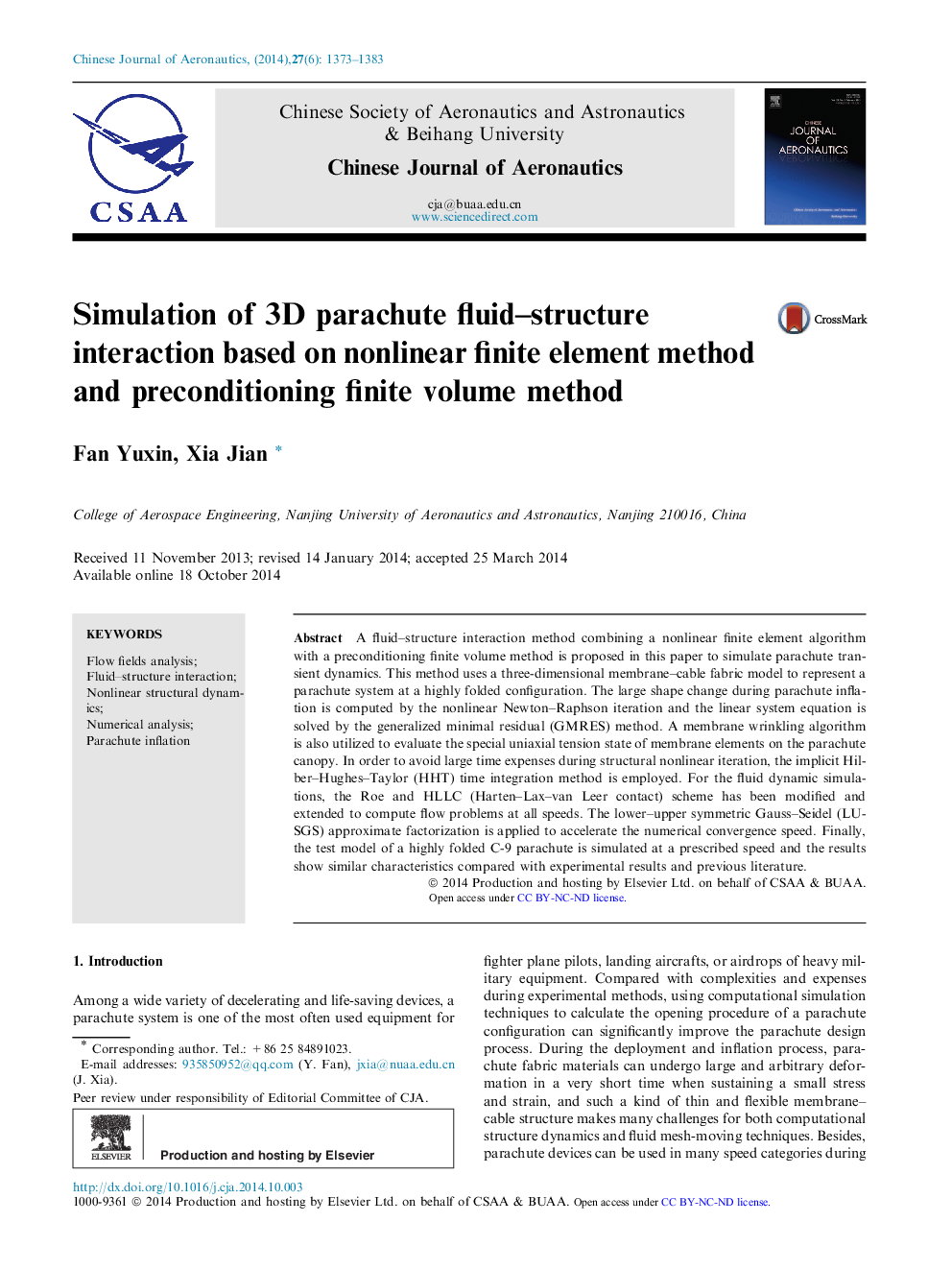| Article ID | Journal | Published Year | Pages | File Type |
|---|---|---|---|---|
| 765830 | Chinese Journal of Aeronautics | 2014 | 11 Pages |
A fluid–structure interaction method combining a nonlinear finite element algorithm with a preconditioning finite volume method is proposed in this paper to simulate parachute transient dynamics. This method uses a three-dimensional membrane–cable fabric model to represent a parachute system at a highly folded configuration. The large shape change during parachute inflation is computed by the nonlinear Newton–Raphson iteration and the linear system equation is solved by the generalized minimal residual (GMRES) method. A membrane wrinkling algorithm is also utilized to evaluate the special uniaxial tension state of membrane elements on the parachute canopy. In order to avoid large time expenses during structural nonlinear iteration, the implicit Hilber–Hughes–Taylor (HHT) time integration method is employed. For the fluid dynamic simulations, the Roe and HLLC (Harten–Lax–van Leer contact) scheme has been modified and extended to compute flow problems at all speeds. The lower–upper symmetric Gauss–Seidel (LU-SGS) approximate factorization is applied to accelerate the numerical convergence speed. Finally, the test model of a highly folded C-9 parachute is simulated at a prescribed speed and the results show similar characteristics compared with experimental results and previous literature.
